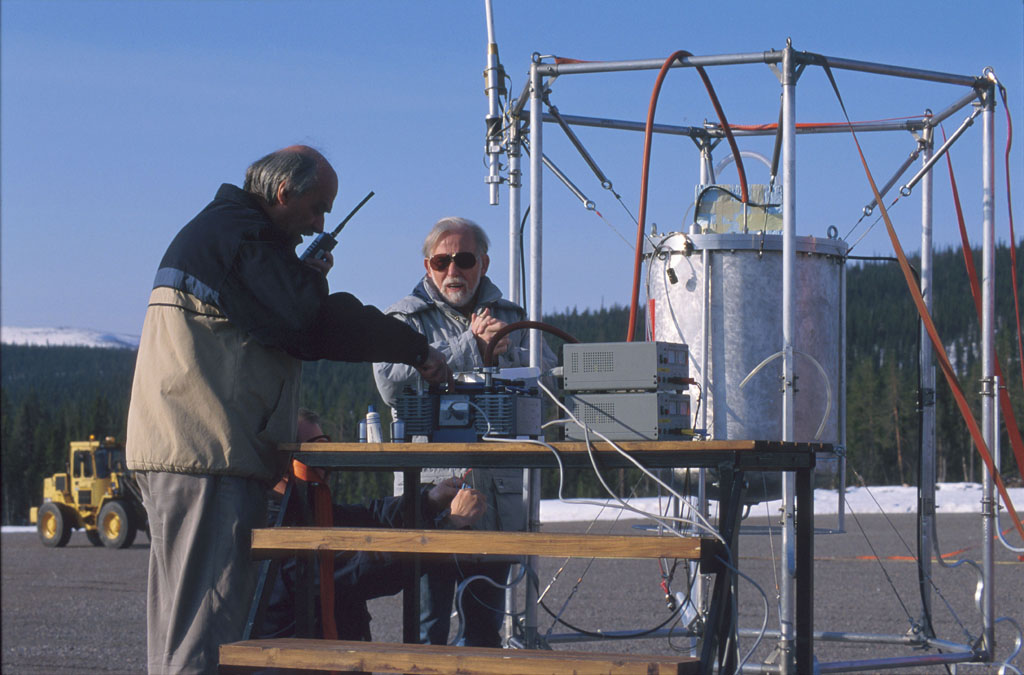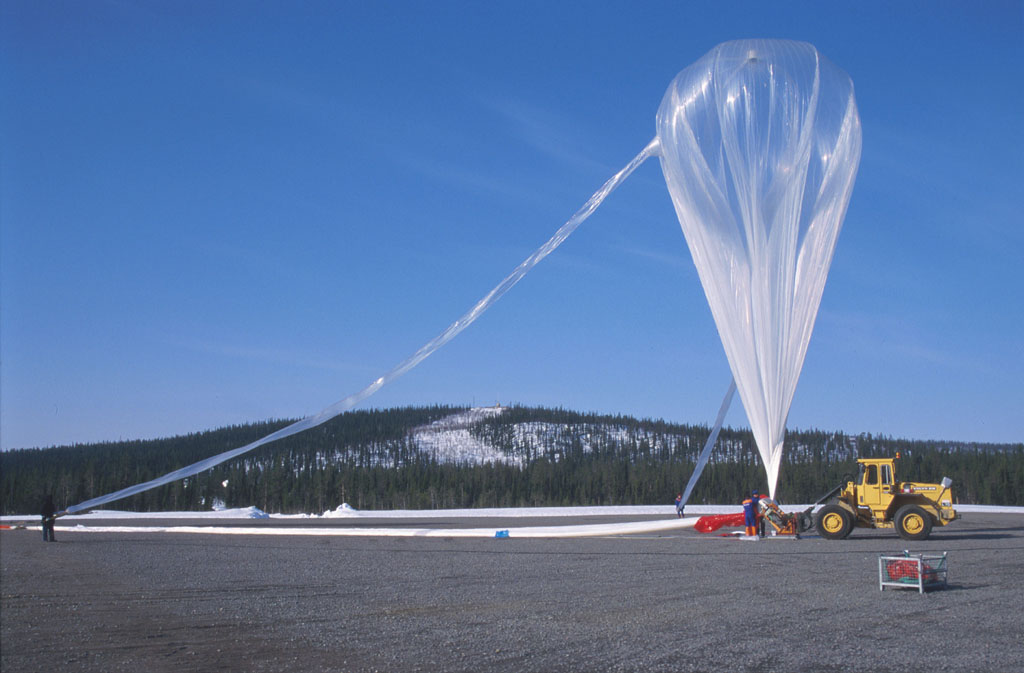Purpose of the flight and payload description
The main objective of the flight was to collect ozone samples by means of a cryogenic device developed by the atmospheric research group at the Max-Planck-Institut for Nuclear Physics at Heidelberg, Germany. This new generation of collectors, can obtain carbon dioxide and ozone samples in separate low temperature traps at 80 K and 63 K, respectively. Four sets of dual traps are part of a balloon payload. Stratospheric air is forced through the first trap in which CO2 will condense, and will continue through a second trap where ozone is collected without condensing any of the major atmospheric gases. After sufficient amount of ozone is collected during float or during a slow descent the inlet is closed and the traps are briefly connected to a small pump to remove residual air before another pair of traps is switched to the inlet. Of the four samples obtained during a flight, two are usually collected during float and the other two during the descent. Either atmospheric temperature sensors were part of the payload or Vaisala ozone sondes were launched during or immediately before or after a balloon flight to provide temperature, total pressure, and ozone partial pressures.
Details of the balloon flight
Balloon launched on: 5/8/2000 at 20:16 utc
Launch site: European Space Range, Kiruna, Sweden
Balloon launched by: Centre National d'Etudes Spatiales (CNES) / DLR
Balloon manufacturer/size/composition: Zero Pressure Balloon
End of flight (L for landing time, W for last contact, otherwise termination time): 5/8/2000
Command failure
External references
- List of balloons launched from ESRANGE SSC Space website (via Archive.Org)
1362If you consider this website interesting or useful, you can help me to keep it up and running with a small donation to cover the operational costs. Just the equivalent of the price of a cup of coffee helps a lot.



